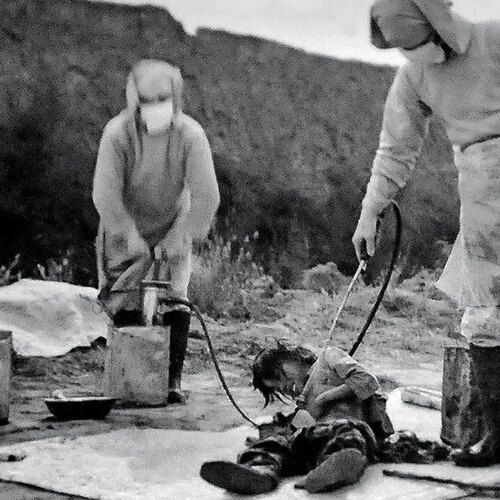Methods
Unit 731’s experimental methods were characterized by unprecedented cruelty and a systematic approach to biological warfare research. The unit conducted its experiments primarily on Chinese civilians, Allied prisoners of war (POWs), and marginalized populations, exploiting their status as powerless victims to further Japan’s military and scientific objectives.
One of the most notorious practices of Unit 731 was vivisection performed without anesthesia. Victims were deliberately infected with deadly pathogens such as bubonic plague, cholera, and typhus, and their organs were examined and cut into while they were still alive to observe the progression of these diseases in real time. These procedures were not only excruciating for the victims but also devoid of ethical oversight, as researchers aimed to understand how diseases spread and impacted human physiology.
Mark Felton’s The Devil’s Doctors provides a detailed account of the unit’s experiments on Allied POWs, highlighting the physical and psychological toll on victims. Felton’s work is particularly valuable in demonstrating how Unit 731 targeted diverse populations, broadening the scope of its atrocities (Felton, 2012). By experimenting on POWs, the unit not only sought to refine its biological weapons but also gathered data relevant to medical treatments for Japanese soldiers.
In addition to vivisections, Unit 731 utilized experimental biological weapons to further its research. Bombs filled with plague-infected fleas were tested on live human targets to assess the potential for mass infection and terror. Victims were intentionally exposed to these biological agents, and their survival rates, symptoms, and disease progression were meticulously recorded. Declassified U.S. government documents from the National Archives confirm the use of such weapons, noting that survivors of these attacks were later dissected to extract additional data. These experiments aimed to develop biological warfare techniques that could be deployed against enemy populations during wartime.
Environmental experiments were another hallmark of Unit 731’s operations. Victims were exposed to extreme temperatures, such as prolonged freezing or scorching heat, to study the effects of environmental stressors on human physiology. Researchers sought to understand how frostbite, dehydration, and other conditions could incapacitate individuals, with the ultimate goal of improving survival strategies for Japanese soldiers operating in harsh climates. This research also extended to testing the limits of human endurance by depriving subjects of food, water, or oxygen.
Unit 731’s methods were rooted in a philosophy of dehumanization, which justified these atrocities under the guise of advancing military science. Victims were referred to as *maruta* (logs), reducing them to mere objects of study rather than individuals. This systematic dehumanization was critical in allowing the researchers to disregard the moral implications of their actions and pursue their objectives without restraint (Nie, 2006).
The experiments conducted at Unit 731 were designed with specific military and scientific goals in mind. By infecting subjects with diseases and observing their effects, the unit sought to create biological weapons that could incapacitate or decimate enemy forces. Simultaneously, the research provided data on how to treat and prevent diseases that might affect Japanese troops, particularly in biologically hostile environments. These dual objectives—offensive biological warfare and defensive medical advancements—drove the extensive and horrific experimentation carried out at the facility.



